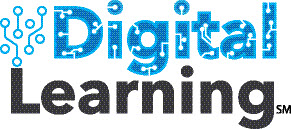David Kelly’s Curated L&D Content for the Week of 10/02/17
 This week’s curated content includes links exploring the following:
This week’s curated content includes links exploring the following:
- ways to put Apple’s new screen recording functionality to use
- an examination of cognitive biases
- doing more with less when it comes to slides
- how creating artifacts may change learning
- why digital transformations can fail
- questions that are arising about learning in a digital world
6 Reasons to Record Your iPhone Screen by Ryan Knott
With the recent release of iOS11, Apple added a huge new feature to iPhones and iPads: the ability to record what you’re doing on your screen. This provides a great new resource for learning and development, and this post explores six examples of such potential.
Every Single Cognitive Bias in One Infographic via Visual Capitalist
I share this post for a few reasons. First, it’s another interesting visualization to inspire your design, especially if you’re interested in infographics. Second, the image shows you the sheer volume of biases we can all be carrying with us. Lastly, the post serves as a great resource to research and understand the various types of biases that can affect our ability to learn.
3 Easy Ways to Cut Text And Upgrade Your Slides by Mike Taylor
The use of slides (or slide-like formats) is common, but that doesn’t mean your slide decks need to be common as well. Sometimes the best rule to follow when creating compelling slides is “Less is more”. This post explores three simple ways to cut text from your slides and make them more effective.
Learning as Artifact Creation by George Siemens
Learning programs are often structured as top-down, with knowledge from experts being shared with novices. But in the digital world, that is changing. This post explores what happens to learning, and education and training by extension, when those learning get involved in creating artifacts.
The Real Reasons Most Digital Transformations Fail by FastCo.works
Digital transformation is a buzzword in today’s business world. It’s a concept that can also be applied to any major shift in technology usage within an organization or an organizational unit, such as training. As you look to harness the potential of emerging technologies, this post has some important pointers to keep in mind.
Curiosity, cognition and content by Steve Wheeler
The world of digital information has transformed what it means to learn. Knowledge is now democratized, and that concept makes many educators and trainers nervous. As the very concept of what knowledge means in a connected digital environment shifts, new questions about education, training, and learning emerge. Many of those questions are brought to light in this post.
Explore the world of Digital Learning…

If you’re interested in taking a deeper dive into the world of digital learning and how it is transforming education and training, consider joining us for DevLearn October 25-27 in Las Vegas. We’ll have plenty of sessions exploring digital learning at the conference, and will be hosting an Executive Forum for senior leaders interested in exploring how the emergence of digital learning affects organizational learning and performance strategies.

Leave a Reply